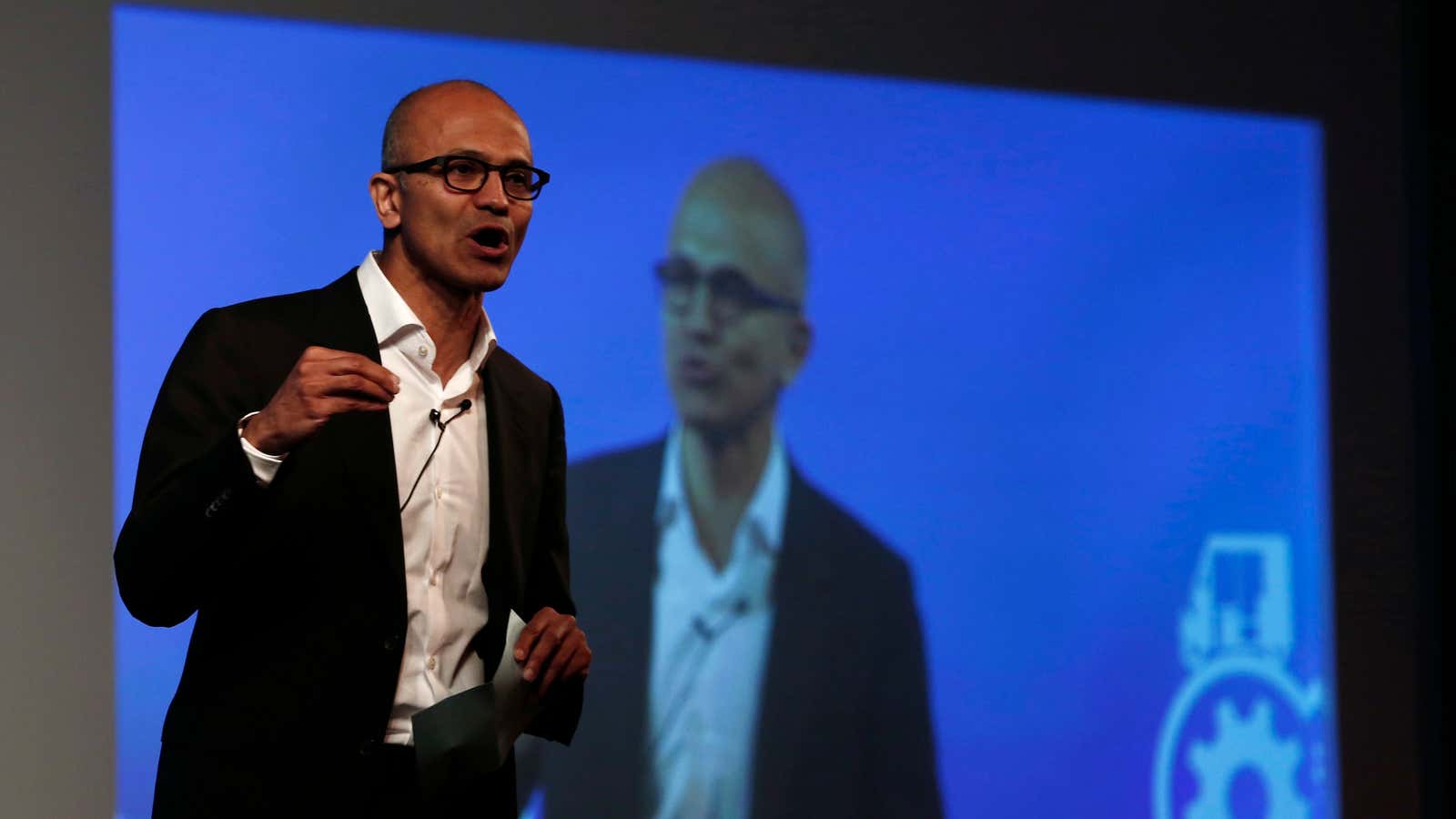Microsoft’s search for replacement for Steve Ballmer was unusually long and fraught for the sort of big company where succession is usually predetermined. In a Vanity Fair feature, Bethany McLean reveals a process complicated by the timing and circumstances of Ballmer’s departure.
Ballmer told the board in June he had a handshake deal to buy Nokia’s devices group, and required only the board’s stamp of approval. He skipped the traditional post-meeting dinner for his son’s middle school graduation, only to find out the next day the board had rejected the deal and didn’t want to discuss it. Ballmer was furious, to the point of yelling and threatening resignation. Founder Bill Gates was part of that decision, and Ballmer felt betrayed.
The board eventually relented and agreed to a version of the deal, but it had become clear to Ballmer that there was no way he could stay even though there wasn’t a CEO candidate in place to follow him.
“There was too much water under the bridge with this board,” Ballmer told McLean.
All of this led to a schism between Gates and Ballmer: the longtime friends who stopped speaking, according to McLean, complicating an already tough search
Here’s McLean’s revealing list of people the board seriously considered:
Alan Mulally, former CEO of Ford
The turnaround specialist was initially a frontrunner, but felt he shouldn’t be required to formally interview for the job.
Steve Mollenkopf, CEO of Qualcomm
He was then COO of the telecom company and a leading external candidate—but was named the new CEO within 24 hours of reports Microsoft was seriously interested.
Paul Maritz, CEO of Pivotal
Maritz apparently felt that Microsoft was significantly behind and would have to get smaller and make tough choices. Gates felt otherwise, and Maritz declined, thinking he wouldn’t have sufficient freedom.
John Thompson, CEO of Virtual Instruments and Microsoft board member
A source told McLean that the former IBM executive, who replaced Ballmer as Microsoft’s chairman, never truly pursued the job. But Gates apparently said he wouldn’t support him over Nadella when other board members suggested the idea.
Hans Vestburg, CEO of Ericsson
Parts of the board really wanted an outsider even after others declined, but Vestburg delayed meetings leading to the conclusion he wasn’t all that interested.
Kevin Turner, COO of Microsoft
The former Walmart executive was someone that Ballmer pushed, but he lost out to Nadella as the top internal choice.
How did Nadella emerge from this minefield of candidates?
In addition to being a Microsoft loyalist, he was perceived as being willing to change things and look outside an insular culture. More importantly, perhaps, he’s a “genuinely nice” person who both Steve and Bill love, and who people seem to actually want to follow. Gates’ decision to take a more active role also required someone he could work closely with.
